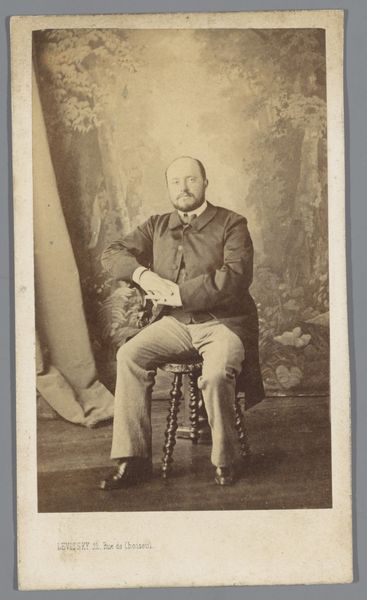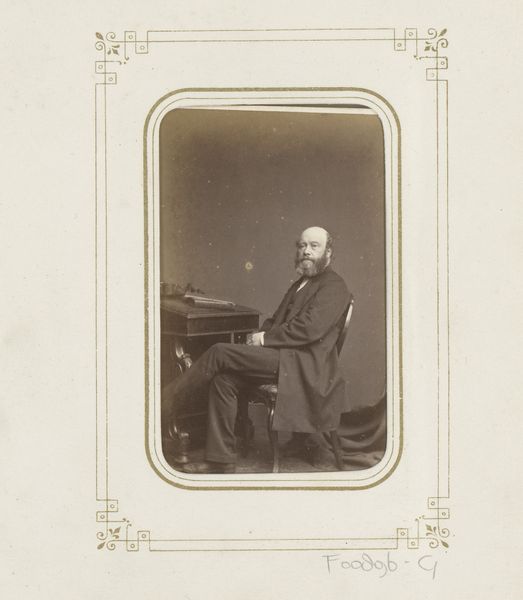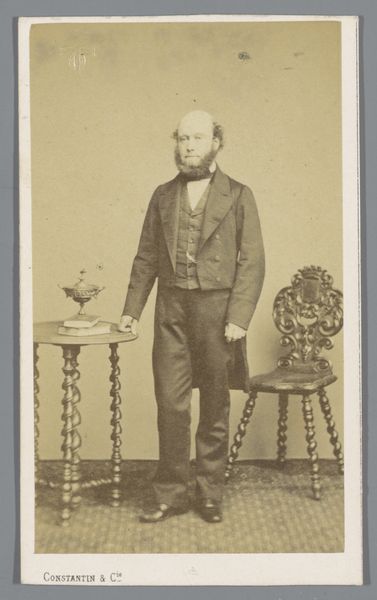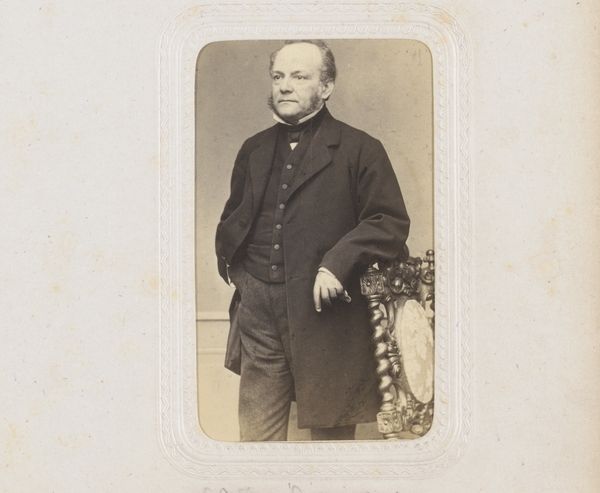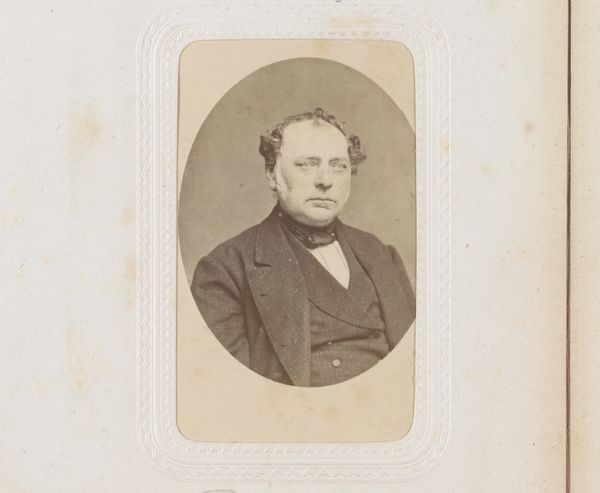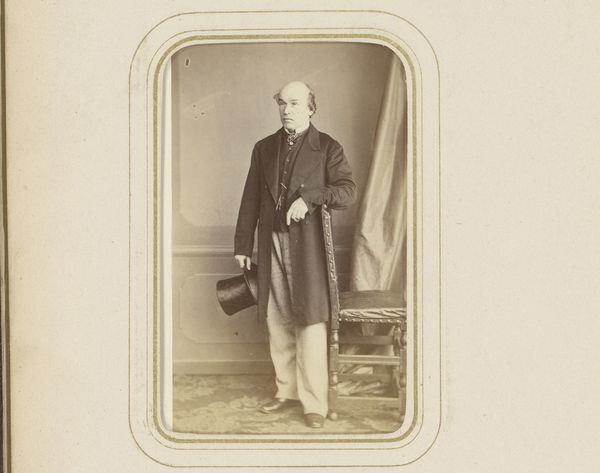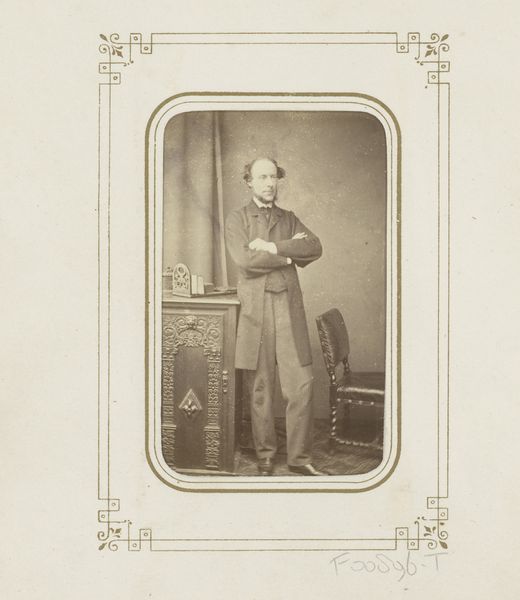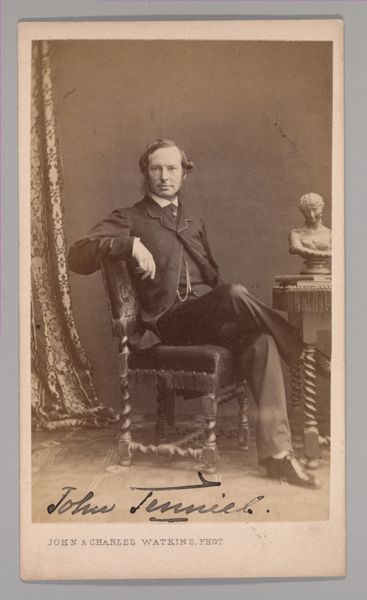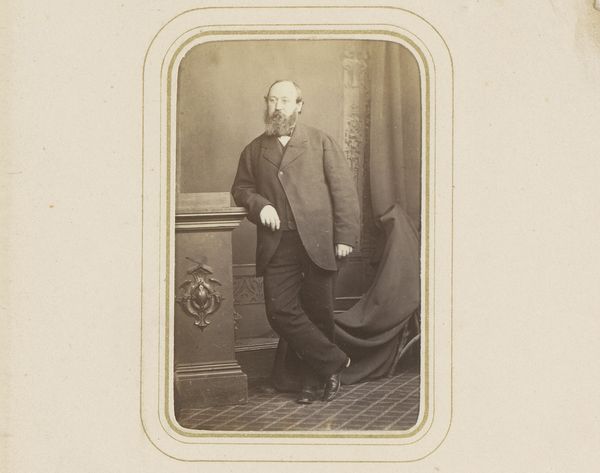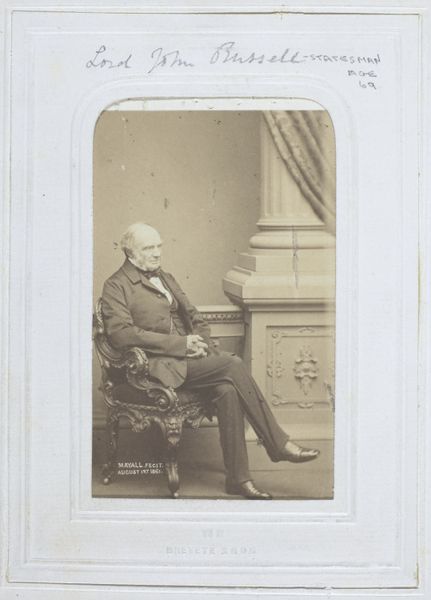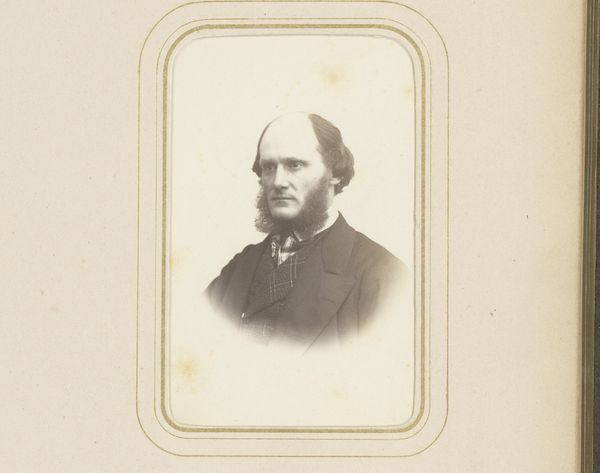
Dimensions: height 102 mm, width 61 mm
Copyright: Rijks Museum: Open Domain
A. Gilford made this small photograph of an unknown man, using a process that was both cutting-edge and increasingly commonplace at the time. Photography in its early days was alchemic, almost magical. It involved coating a surface with light-sensitive chemicals, carefully exposing it to an image, and then developing it through a series of baths. The resulting object, like this portrait, captures a specific moment in time, but also reflects the industrialization and mass production of images. Consider the labor involved: from the preparation of the photographic materials to the skilled operation of the camera and the development process. This was not just art, it was a business, catering to a growing market for personal mementos and social documentation. The photograph, therefore, becomes a testament to both individual identity and the wider social and economic forces at play. Thinking about the material and the making helps us appreciate photography not just as a record, but as a complex cultural artifact, deeply intertwined with the era's technological advancements and social aspirations.
Comments
No comments
Be the first to comment and join the conversation on the ultimate creative platform.
